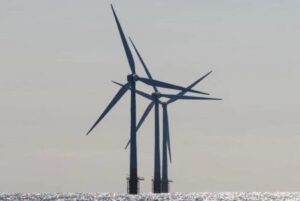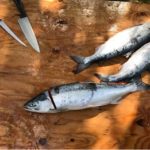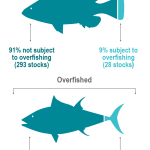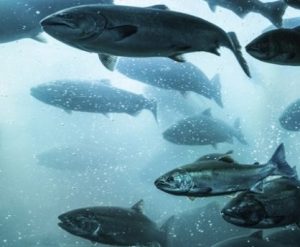Tag Archives: georges-bank-yellowtail-flounder
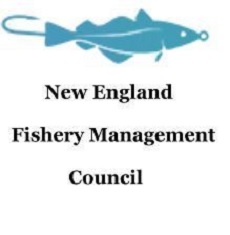
NEFMC Endorses 2022 U.S./Canada TACs; Discusses Groundfish Framework 63
During its late-September 2021 meeting, the New England Fishery Management Council agreed by consensus to accept the U.S./Canada Transboundary Management Guidance Committee’s (TMGC) total allowable catch (TAC) recommendations for three shared groundfish resources on Georges Bank. These involve Eastern Georges Bank cod, Eastern Georges Bank haddock, and Georges Bank yellowtail flounder. The TMGC recommended the TACs based on advice from the U.S./Canada Transboundary Resources Assessment Committee (TRAC). >click to read< 14:34
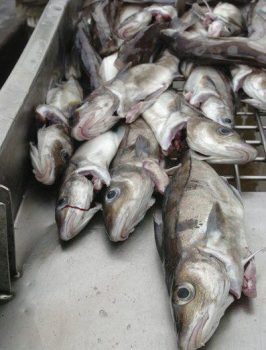
Groundfish quota changes up for debate
The proposed rule, called Framework 58, calls for increasing the commercial quota for Georges Bank cod by 15 percent, Georges Bank haddock by 19 percent and Georges Bank winter flounder by 6 percent for the new fishing season that is set to begin Wednesday. It also includes a 1 percent increase for witch flounder. That’s the good news. The bad news is that the proposed rule, published in the Federal Register, calls for a whopping 50 percent cut to the annual catch limit for Georges Bank yellowtail flounder, a 1 percent reduction in the quota Gulf of Maine winter flounder and a 3 percent cut to the catch limit for Atlantic halibut. >click to read<22:43
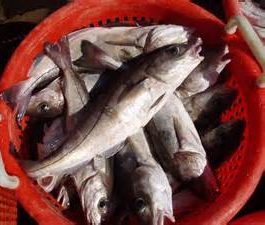
Fishermen facing cuts to Georges Bank stocks, Council considering catch limits for yellowtail, cod, haddock
The New England Fishery Management Council is expected to vote this week on the 2019 total allowable catch limits for three Georges Bank groundfish stocks the United States shares with Canada, with significant reductions expected for each stock. The council, set to meet Monday through Thursday in Plymouth, will discuss total allowable catch, or TAC, recommendations by both the science-based Transboundary Resource Assessment Committee and the management-based Transboundary Management Guidance Committee. The latter, however, is expected to hold more sway in developing the 2019 limits. The U.S. and Canada already have negotiated the catch limits within the TMGC recommendations for Georges Bank yellowtail flounder, Eastern Georges Bank haddock and Eastern Georges Bank cod. >click to read<21:42
Guest View: Cause for optimism at NEFMC meeting
![]() Thank you for the report on the Center for Sustainable Fisheries’ proposal that the New England Fisheries Management Council and National Marine Fisheries Service implement an intensive, industry-based, collaborative sampling program focusing on increasing data collection and reducing stock-assessment uncertainty (“Fishery council declines yellowtail proposal,” April 26). Read more here 07:16
Thank you for the report on the Center for Sustainable Fisheries’ proposal that the New England Fisheries Management Council and National Marine Fisheries Service implement an intensive, industry-based, collaborative sampling program focusing on increasing data collection and reducing stock-assessment uncertainty (“Fishery council declines yellowtail proposal,” April 26). Read more here 07:16
NMFS Announcement Puts TMGC Yellowtail Quota at 400 Metric Tons Despite Advice that Would Have Allowed More
 Eyebrows were raised recently when National Marine Fisheries Service (NMFS) representatives announced in several forums that the agency would only approve an allocation of 400 metric tons of Georges Bank yellowtail flounder, despite determinations by the more@savingseafood 07:39
Eyebrows were raised recently when National Marine Fisheries Service (NMFS) representatives announced in several forums that the agency would only approve an allocation of 400 metric tons of Georges Bank yellowtail flounder, despite determinations by the more@savingseafood 07:39
NEW BEDFORD: Mayor Jon Mitchell urges fisheries group to base yellowtail quota on reliable science
![]() Mayor Jon Mitchell Tuesday urged the organization responsible for setting catch limits for fish species shared between the United States and Canada to negotiate a Georges Bank yellowtail flounder quota for the 2014 fishing year that does not result in further harm to the fishing industry. Mitchell, in the release, also urged the Transboundary Committee members to “work to ensure that future TRAC assessments are conducted in a manner that renders them sufficiently reliable for giving catch advice.” more@southcoasttoday 02:40
Mayor Jon Mitchell Tuesday urged the organization responsible for setting catch limits for fish species shared between the United States and Canada to negotiate a Georges Bank yellowtail flounder quota for the 2014 fishing year that does not result in further harm to the fishing industry. Mitchell, in the release, also urged the Transboundary Committee members to “work to ensure that future TRAC assessments are conducted in a manner that renders them sufficiently reliable for giving catch advice.” more@southcoasttoday 02:40
F/V Mary K and F/V Yankee Pride Complete Anticipated NMFS Flatfish Pilot Survey

Scientists, Industry Leaders Question Validity of Yellowtail Flounder Assessments
![]() As the Transboundary Resources Assessment Committee (TRAC) publicizes its recommendations for drastically reduced catch limits for Georges Bank yellowtail flounder, a diverse group of industry stakeholders and marine scientists are raising questions about the reliability of the TRAC’s advice and the underlying science behind it. This includes one of the largest industry associations, the Fisheries Survival Fund, and the current President of the American Institute of Fishery Research Biologists (AIFRB), Dr. Steve Cadrin. more@savingseafood 12:29
As the Transboundary Resources Assessment Committee (TRAC) publicizes its recommendations for drastically reduced catch limits for Georges Bank yellowtail flounder, a diverse group of industry stakeholders and marine scientists are raising questions about the reliability of the TRAC’s advice and the underlying science behind it. This includes one of the largest industry associations, the Fisheries Survival Fund, and the current President of the American Institute of Fishery Research Biologists (AIFRB), Dr. Steve Cadrin. more@savingseafood 12:29
Scallop Industry: There has been “no progress” in Yellowtail Flounder Assessments Links
VIDEO: F S F Georges Bank Yellowtail Flounder and Incidental Catch Avoidance Forum (lots of information)
WASHING TON (Saving Seafood) Nov. 14, 2012 – Yesterday, the Fisheries Survival Fund, an industry group that includes the majority of full-time, limited-access scallop permit holders, hosted a forum, “Georges Bank Yellowtail Flounder and Incidental Catch Avoidance,” immediately following the New England Fisheries Management Council meeting in Newport, Rhode Island. Speakers at the event included Dr. Steve Cadrin and Cate O’Keefe of the School of Marine Science and Technology (SMAST) at the University of Massachusetts Dartmouth, Dr. David Rudders of the Virginia Institute of Marine Science, and Ron Smolowitz of Coonamessett Farms. http://campaign.r20.constantcontact.com/render?llr=b5nrgsdab&v=001aYDP54lNfT8w5naOyp7HRIgB4VG_lM4fDpTYpg49faLY5slnOWx7hp5-MTnG5BD5KPWh852FbmnbhXTHgUt6n45ny7Eyz5sx1B2fXOjmK-cdZ3Nh3VTYuw%3D%3D
TON (Saving Seafood) Nov. 14, 2012 – Yesterday, the Fisheries Survival Fund, an industry group that includes the majority of full-time, limited-access scallop permit holders, hosted a forum, “Georges Bank Yellowtail Flounder and Incidental Catch Avoidance,” immediately following the New England Fisheries Management Council meeting in Newport, Rhode Island. Speakers at the event included Dr. Steve Cadrin and Cate O’Keefe of the School of Marine Science and Technology (SMAST) at the University of Massachusetts Dartmouth, Dr. David Rudders of the Virginia Institute of Marine Science, and Ron Smolowitz of Coonamessett Farms. http://campaign.r20.constantcontact.com/render?llr=b5nrgsdab&v=001aYDP54lNfT8w5naOyp7HRIgB4VG_lM4fDpTYpg49faLY5slnOWx7hp5-MTnG5BD5KPWh852FbmnbhXTHgUt6n45ny7Eyz5sx1B2fXOjmK-cdZ3Nh3VTYuw%3D%3D

































